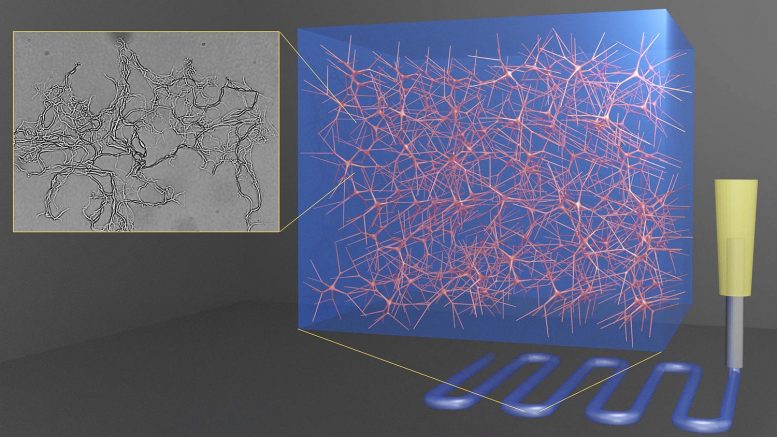
Hydrogels merge two physical forms of the same seaweed material for strength, flexibility.
3D-printable gels with improved and highly controlled properties can be created by merging micro- and nano-sized networks of the same materials harnessed from seaweed, according to new research from North Carolina State University. The findings could have applications in biomedical materials — think of biological scaffolds for growing cells — and soft robotics.
Described in the journal Nature Communications, the findings show that these water-based gels — called homocomposite hydrogels — are both strong and flexible. They are composed of alginates — chemical compounds found in seaweed and algae that are commonly used as thickening agents and in wound dressings.
Merging different-size scale networks of the same alginate together eliminates the fragility that can sometimes occur when differing materials are merged together in a hydrogel, says Orlin Velev, S. Frank and Doris Culberson Distinguished Professor of Chemical and Biomolecular Engineering at NC State and corresponding author of the paper.
“Water-based materials can be soft and brittle,” he said. “But these homocomposite materials — soft fibrillar alginate particles inside a medium of alginate — are really two hydrogels in one: one is a particle hydrogel and one is a molecular hydrogel. Merged together they produce a jelly-like material that is better than the sum of its parts, and whose properties can be tuned precisely for shaping through a 3D printer for on-demand manufacturing.”
“We are reinforcing a hydrogel material with the same material, which is remarkable because it uses just one material to improve the overall mechanical properties,” said Lilian Hsiao, an assistant professor of chemical and molecular engineering at NC State and a co-author of the paper. “Alginates are used in wound dressings, so this material potentially could be used as a strengthened 3D-printed bandage or as a patch for wound healing or drug delivery.”
“These types of materials have the potential to be most useful in medical products, in food products as a thickening agent, or in soft robotics,” said Austin Williams, one of the paper’s first coauthors and a graduate student in Velev’s lab.
Future work will attempt to fine-tune this method of merging of homocomposite materials to advance 3D printing for biomedical applications or biomedical injection materials, Velev said.
“This technique may have uses with other types of gels, like those used in coatings or in consumer products,” Hsiao said.
Reference: “Printable homocomposite hydrogels with synergistically reinforced molecular-colloidal networks” by Austin H. Williams, Sangchul Roh, Alan R. Jacob, Simeon D. Stoyanov, Lilian Hsiao and Orlin D. Velev, 14 May 2021, Nature Communications.
DOI: 10.1038/s41467-021-23098-9
Former NC State Ph.D. student Sangchul Roh is the paper’s other first coauthor. Coauthor Simeon Stoyanov from Wageningen University participated in the conception of the new material.
The research is funded by the National Science Foundation under grants CMMI-1825476, CBET-1804462 and ECCS-2025064.